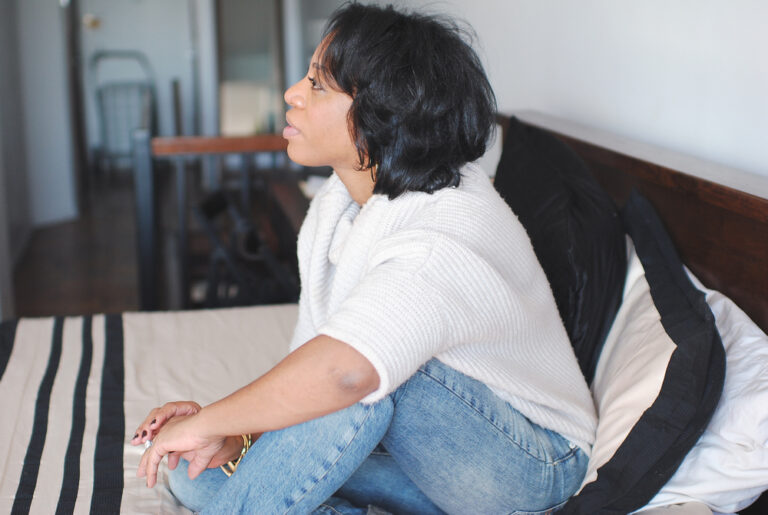One of the worst moments of parenting arises when you have to set limits and boundaries for your children. These moments don’t always get good responses from our children.
It’s important to know that children need a balance of both love and limits. And those two words, although used separately, often times overlap because setting limits is also a way for our children to know we love them.
It’s okay to want to place boundaries because we know what’s best, or just as a response to an annoying temper tantrum. Setting boundaries allows for the parent/child relationship to be one of trust and security. Of course that sounds easy.
But the task of setting limits or giving a consequence is much more difficult when you consider the frustration of a high-pitched cry or how hard it can be to simply say “no” and follow through.
It’s all complicated, it can be challenging, and it often leads to feeling unsuccessful.
Why Kids Need Consistency and Structure
Consistency and structure are vital during parenting’s most difficult moments. Kids enjoy habits—they feel better when they know exactly what to expect next.
For children, the fear of trying something new can initially be terrifying. (After the tenth time of doing something, they realize that it’s unavoidable and actually okay.)
Your child wants to please you, but it is natural for our children to be in need of discipline.
What we tell children when we keep things the same is that they can feel safe and that they have stability in their lives. This assures children that their environment doesn’t change. This doesn’t mean that routines won’t vary from time to time, because they will. But when parents say “no” to touching the hot stove, the answer will always be no. And for children that is an essential part of their development.
Structure allows children to follow routines and ease into transitions. Have you noticed that in any classroom you visit there is always some sort of visual reminder for children to know what their day will consist of? This is done purposely to help children stay on task—and more importantly so they are aware of expectations. This follows us into adulthood, as we also have to keep schedules (especially parents!).
All of this ties into the concept of discipline. The more we can prepare kids and help them with consistency, stability, and structure, the more we’re able to decrease meltdowns that result in a consequence.
Disciplining Your Child: Time-Out Versus Spankings
I know that some of us were raised where spankings were the only form of discipline, and I’m not here to tell you that it was wrong. I will simple state as an early childhood mental health professional the pros and cons, and why I promote the use of timeouts.
Spankings offer an instant reaction for parents. Some parents see this as a bonus because it takes care of the problem immediately. Children start to fear the use of pain and begin to comply out of fear, so I definitely understand why some caregivers go that route.
But spanking teaches a child that we react by hitting when frustrated. Another concern with spankings is the emotional reaction it creates for the adult.
Are we hitting our child because our fuse is so short we become reactive?
Are we spanking when our patience runs thin, and we tell our minds nothing else will fix it?
Think of how you feel when you spank your child. Make sure it comes from a place of safety, meaning make sure it is always appropriate, if that makes sense.
Now time-out is not very immediate. It takes tons of time and patience to teach a child to stay in a spot and think about their choices.

But what time-out does offer is a time for your child to learn how to calm their own bodies down by giving a time for the heart rate to decrease. When we place children in time-out, it allows the child to learn how to take care of themselves. Kids begin to understand that when they get upset or mad, or simply can’t get their way, they are allowed to have a reaction—but it doesn’t warrant the attention from the caregiver.
Another benefit of using time-out is that children begin to learn what gets their parent’s attention. Children are attention seekers regardless if it’s from negative or positive behavior. What we give attention to is often what we see the child exhibit.
For example, have you ever had to say no a million times, only to get the same response? It’s because in those moments our children are getting the best of us. Try ignoring your child during those moments, and see if it results in a different behavior. If we can begin to show a child that negative behavior warrants no attention, and positive behavior warrants praise, guess what we will see more of? THE POSITIVE!
Need some guidance in using time-outs instead of spankings? Try these tips.
1. Always start with ignoring.
Literally ignore your child when they are whining, crying, or have been told no but refuse to accept it. Walk out the room, talk to a friend on the phone, begin a hobby—just don’t entertain it. This is so hard to do, because we want to say a million things. I’ve learned as a parent to pick my battles.
2. Teach them how to calm themselves down.
A cool way to extend time-out as a way to increase childhood development is to offer activities that help your child calm down. I place bubbles, books, a squishy toy, etc. in the time-out space we use.
This is a tool to use to decrease the heart rate. Allow deep breaths or something sensory based to allow your child’s body to calm down so they are more rational. The recovery is faster!
3. Try to use the same time-out spot in the home.
Make sure it is not the same place they sleep, so they don’t associate time-out with sleeping. Make sure the spot lacks distractions and that it is safe.
4. Time the time-out.
I place one minute for every year of age: so 2 years old = two minutes. Of course they may not even stay for that long. But be repetitive by physically helping them stay or putting them back in the spot.
5. Don’t over talk.
The punishment is placing them in time-out. No child can listen or rationalize when they are upset. Don’t begin a speech about what they should have done. Simply state the reason and place them in the spot. Trust me, they will get the point.
6. Adjust for older children.
Time-out for older children can simply mean taking a break to go think about their actions and repair. My 8-year-old daughter Kennedy after a few moments will apologize, because she knows she was wrong.
If I threaten a consequence—such as no company or no television—then it is exactly that. What mommy says goes. Now there is always room for compromising. I try not to argue, but if she can logically state her case, I’m always down to listen. As parents the follow through is key.
7. After you impose a consequence, start from a clean state.
No holding grudges or punishing all day because of one moment. Let your child know that behavior is redeemable, and the consequence doesn’t last forever. (You can read how this has played out in practice in my piece, Why I Show My Daughter My Flaws.)
Practicing Mindful Disciplining
My go-to guide for time-out is below. This chart allows you to understand the cycle of time-out. I promise you if you resort to this every time, your child will begin to decrease the amount of defiance. This provides your child with an environment of safety and consistency.

Ultimately you as an adult decide what type of discipline strategies to use in the comforts of your home. I have seen my share fair of child-abuse cases to know that time-out is just an overall safe strategy. And that isn’t saying that those who choose spanking are abusers. The point is that we are teaching children that hitting is never okay, and there are more effective ways to get what you need.
Remember that your children, whether you’re using spankings or time-out, love you just the same. Your child wants to please you, but it is natural for our children to be in need of discipline. This is how children learn right from wrong, how to follow rules, and how to respect authority.
We aren’t born with the understanding of how and why we see the world the way it is. Children’s brains develop in connection with the experiences parents expose them to. So when you’re considering how to use discipline, remember the messages you are sending and how you want those messages to be remembered.

















